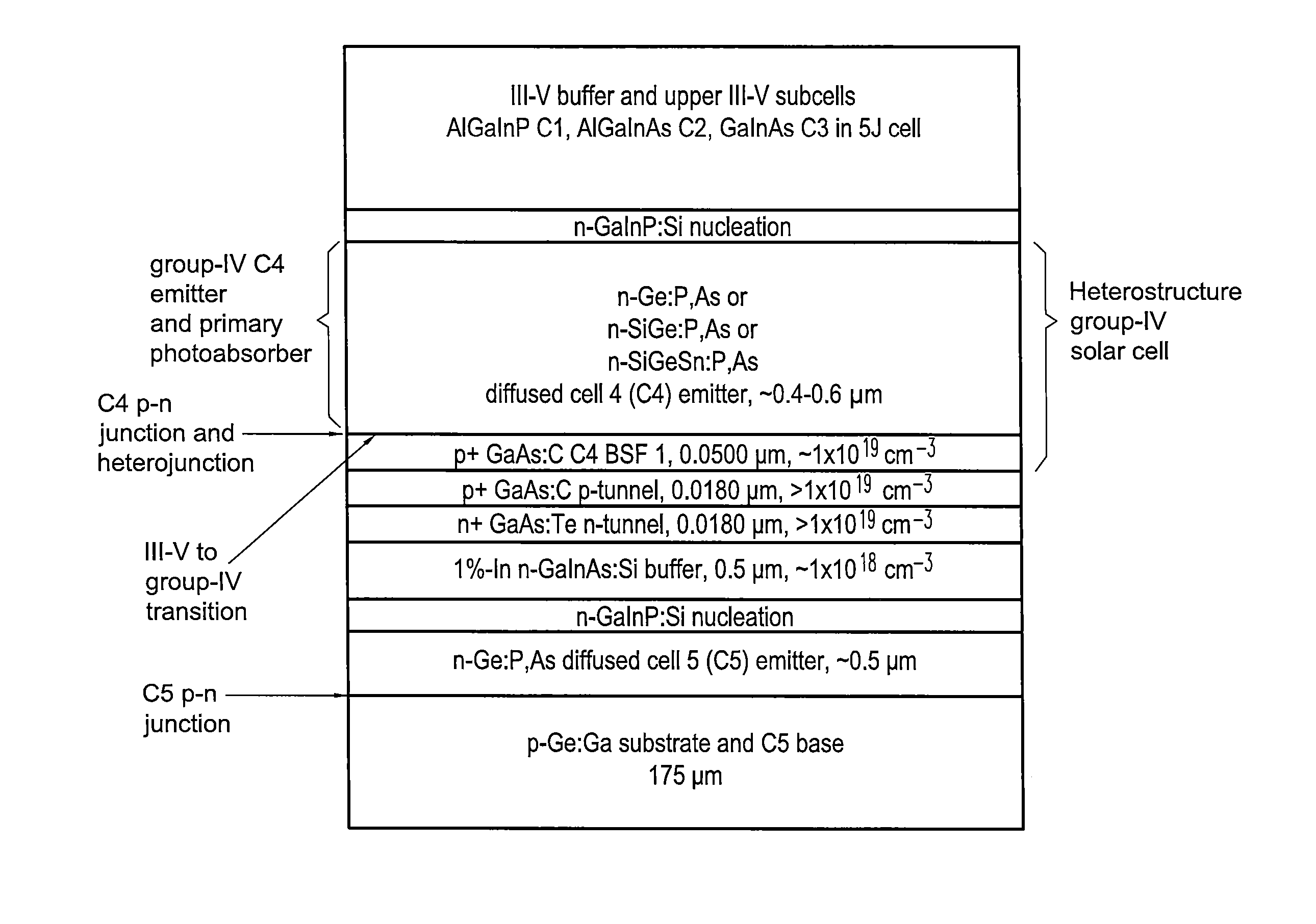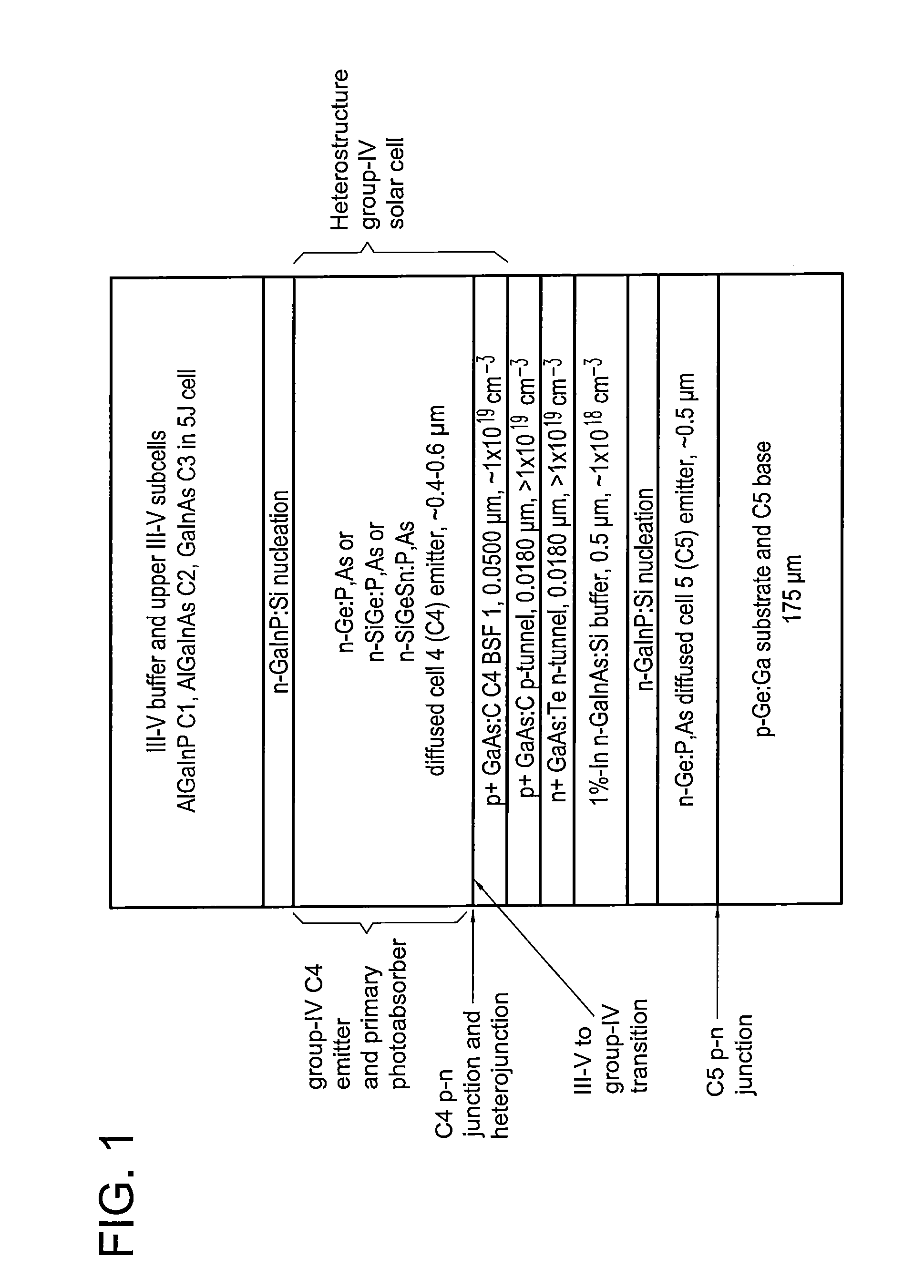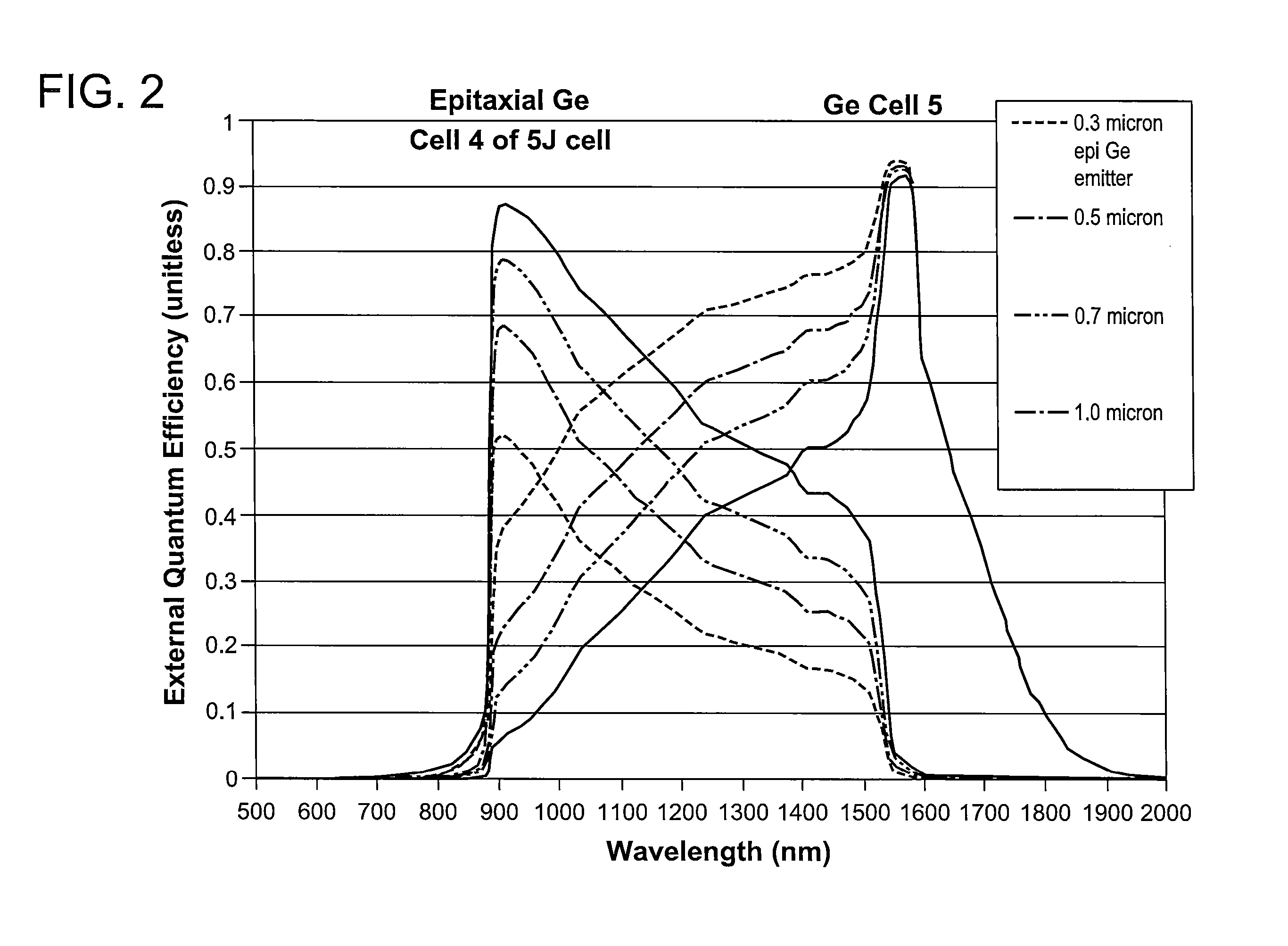GROUP-IV SOLAR CELL STRUCTURE USING GROUP-IV or III-V HETEROSTRUCTURES
a solar cell and heterostructure technology, applied in the field of photovoltaic cells, can solve the problems of limiting the number of subcells (also referred to as collecting junctions or subcell junctions) employed, affecting and reducing the efficiency of photovoltaic cells
- Summary
- Abstract
- Description
- Claims
- Application Information
AI Technical Summary
Benefits of technology
Problems solved by technology
Method used
Image
Examples
Embodiment Construction
[0106]According to the present disclosure, systems and methods are disclosed for making significant improvements for terrestrial and non-terrestrial photovoltaic cells, such as, for example, concentrator solar cells and space solar cells, providing significantly higher efficiency than are available in today's most advanced solar cells. The approaches described herein make use of the lower-cost, more reliable, and more scalable processes of upright solar cell growth, and lattice-matched growth or metamorphic growth with small lattice mismatch, as opposed to the inverted cell growth and cell processing, and metamorphic growth with high lattice mismatch of inverted metamorphic cells.
[0107]The present disclosure allows the formation of multijunction cells, such as, for example, 3-junction (3J), 4-junction (4J), 5-junction (5J), 6-junction (6J), 7-junction (7J) solar cells, or cells with 8 junctions or more, that incorporate a group-IV solar cell. Preferred cells comprise, for example, e...
PUM
 Login to View More
Login to View More Abstract
Description
Claims
Application Information
 Login to View More
Login to View More - Generate Ideas
- Intellectual Property
- Life Sciences
- Materials
- Tech Scout
- Unparalleled Data Quality
- Higher Quality Content
- 60% Fewer Hallucinations
Browse by: Latest US Patents, China's latest patents, Technical Efficacy Thesaurus, Application Domain, Technology Topic, Popular Technical Reports.
© 2025 PatSnap. All rights reserved.Legal|Privacy policy|Modern Slavery Act Transparency Statement|Sitemap|About US| Contact US: help@patsnap.com



